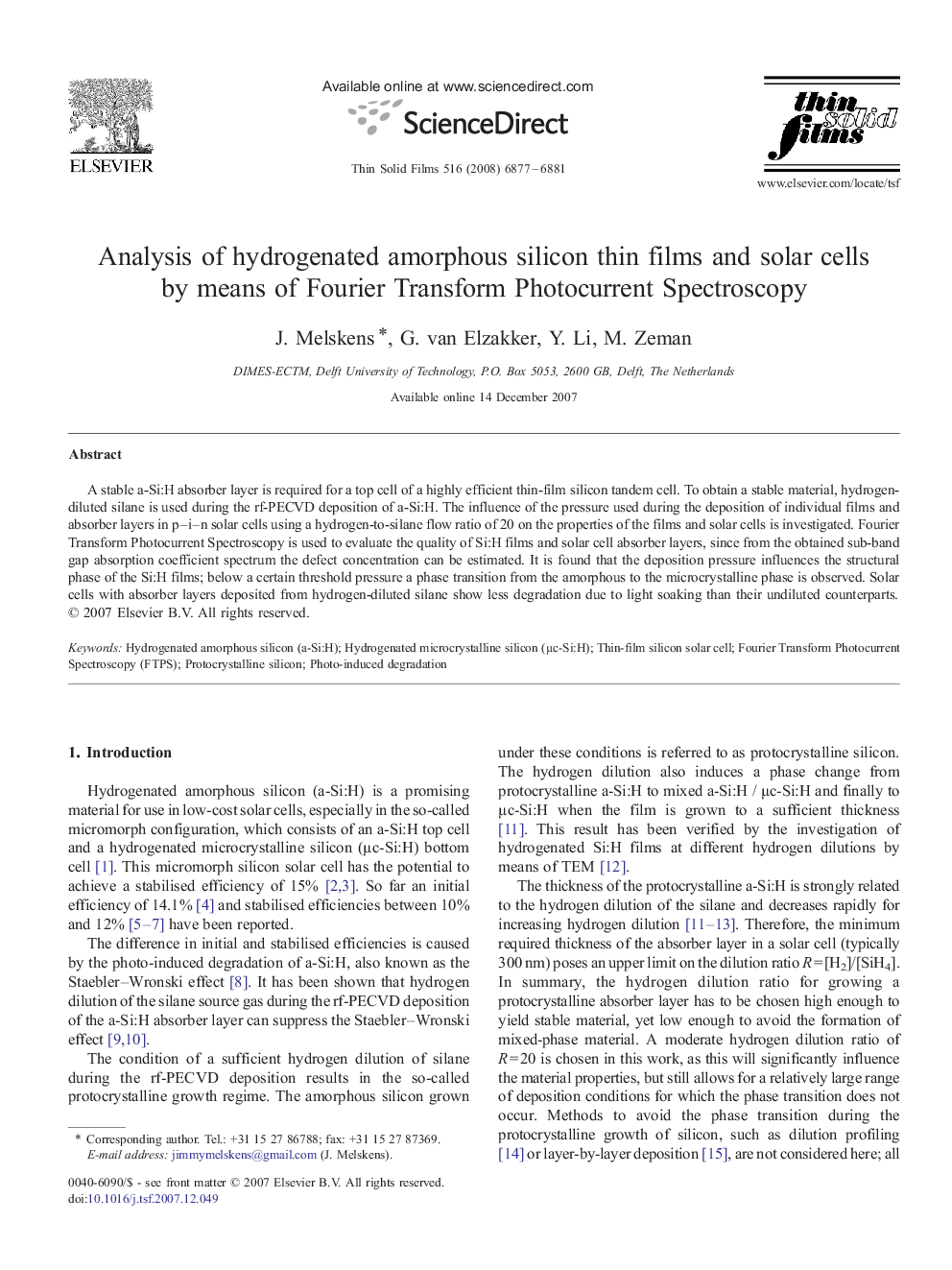| Article ID | Journal | Published Year | Pages | File Type |
|---|---|---|---|---|
| 1674436 | Thin Solid Films | 2008 | 5 Pages |
A stable a-Si:H absorber layer is required for a top cell of a highly efficient thin-film silicon tandem cell. To obtain a stable material, hydrogen-diluted silane is used during the rf-PECVD deposition of a-Si:H. The influence of the pressure used during the deposition of individual films and absorber layers in p–i–n solar cells using a hydrogen-to-silane flow ratio of 20 on the properties of the films and solar cells is investigated. Fourier Transform Photocurrent Spectroscopy is used to evaluate the quality of Si:H films and solar cell absorber layers, since from the obtained sub-band gap absorption coefficient spectrum the defect concentration can be estimated. It is found that the deposition pressure influences the structural phase of the Si:H films; below a certain threshold pressure a phase transition from the amorphous to the microcrystalline phase is observed. Solar cells with absorber layers deposited from hydrogen-diluted silane show less degradation due to light soaking than their undiluted counterparts.
